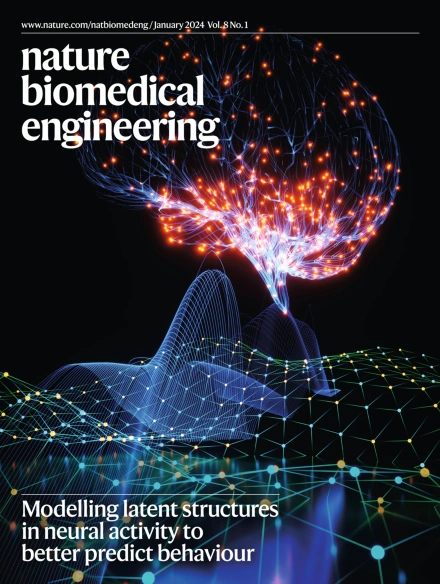Systematic functional screening of switchable aptamer beacon probes.
IF 26.8
1区 医学
Q1 ENGINEERING, BIOMEDICAL
引用次数: 0
Abstract
Immunoassays using affinity binders such as antibodies and aptamers are crucial for molecular biology. However, the advancement of analytical methods based on these affinity probes is often hampered by complex operational steps that can introduce errors, particularly in intricate environments such as intracellular settings and microfluidic systems. There is growing interest in developing molecular probes for wash-free assays that activate signals upon target detection. Here we report a systematic functional screening platform for switchable aptamer beacon probes that can achieve target-responsive detection. A stem-loop, hairpin-shaped beacon library was constructed on microbeads and screened using target-responsive fluorescence-activated sorting. The selected aptamer beacons exhibit strong affinities, triggering fluorescence only upon binding, thus enabling wash-free immunoassays for the detection of intracellular and membrane proteins. Computational modelling offers insights into aptamer binding and structural switching mechanisms, revealing how specific protein-aptamer interactions drive stem-loop unwinding and postbinding conformational changes critical for functional activation. This approach establishes a standardized platform for generating switchable aptameric tools, supporting their potential in advanced diagnostics and research.可切换适体信标探针的系统功能筛选。
利用抗体和适体等亲和结合物进行免疫分析对分子生物学至关重要。然而,基于这些亲和探针的分析方法的进步往往受到复杂的操作步骤的阻碍,这些操作步骤可能会引入错误,特别是在复杂的环境中,如细胞内设置和微流体系统。有越来越多的兴趣开发分子探针的无洗涤分析,激活信号的目标检测。在这里,我们报告了一个系统的功能筛选平台,用于可切换的适体信标探针,可以实现目标响应检测。在微珠上构建了茎环,发夹状的信标文库,并使用目标响应荧光激活分选进行筛选。所选择的适体信标具有很强的亲和力,仅在结合时触发荧光,因此可以进行无水洗免疫分析,用于检测细胞内和膜蛋白。计算模型提供了对适体结合和结构转换机制的见解,揭示了特定蛋白质-适体相互作用如何驱动茎环解绕和结合后构象变化,这对功能激活至关重要。这种方法建立了一个标准化的平台,用于生成可切换的aptameric工具,支持其在高级诊断和研究中的潜力。
本文章由计算机程序翻译,如有差异,请以英文原文为准。
求助全文
约1分钟内获得全文
求助全文
来源期刊

Nature Biomedical Engineering
Medicine-Medicine (miscellaneous)
CiteScore
45.30
自引率
1.10%
发文量
138
期刊介绍:
Nature Biomedical Engineering is an online-only monthly journal that was launched in January 2017. It aims to publish original research, reviews, and commentary focusing on applied biomedicine and health technology. The journal targets a diverse audience, including life scientists who are involved in developing experimental or computational systems and methods to enhance our understanding of human physiology. It also covers biomedical researchers and engineers who are engaged in designing or optimizing therapies, assays, devices, or procedures for diagnosing or treating diseases. Additionally, clinicians, who make use of research outputs to evaluate patient health or administer therapy in various clinical settings and healthcare contexts, are also part of the target audience.
 求助内容:
求助内容: 应助结果提醒方式:
应助结果提醒方式:


